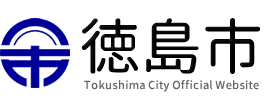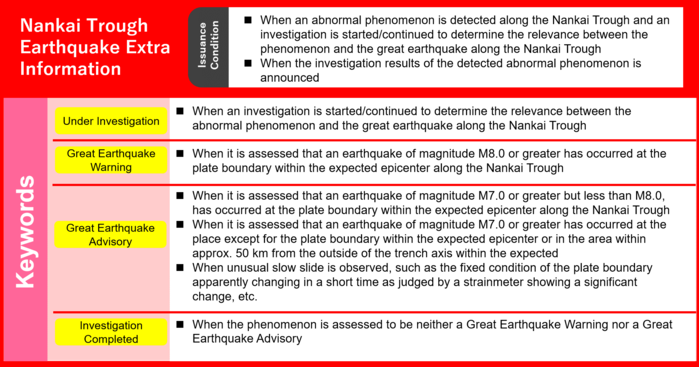The Nankai Trough Earthquake
最終更新日:2024年10月28日
The Nankai Trough Earthquake is expected to be one of the biggest earthquakes to strike Japan. Tokushima City is predicted to be damaged heavily when it strikes. Be prepared for such an earthquake, stay informed about such disasters, and learn how to evacuate when there is danger of a tsunami. Please identify your emergency evacuation sites and high ground evacuation sites designated by Tokushima City, and make sure you know how to get to them. (Refer to the "![]() List of Designated Emergency Evacuation Sites(PDF形式:1,279KB)".)
List of Designated Emergency Evacuation Sites(PDF形式:1,279KB)".)
About Earthquakes
How an Earthquake happens
Most earthquakes happen as the result of movements within the earth’s crust.
How an inter-plate (trench type) earthquake occurs:



- The oceanic plate in a trench descends slowly under the continental plate by a few centimeters per year.
- This movement pulls the edge of the continental plate down. The elastic strain energy around the plate boundary increases over time.
- When the stress reaches its limit, the continental plate springs up, causing an earthquake. This movement may also cause a tsunami.
Damage caused by earthquakes
There may be large-scale damage such as buildings collapsing or cracks in the road. Earthquakes also often cause fire, tsunami and other damage.
When a big earthquake strikes, essential services, such as electricity, water, gas, communication services, and transportation, may not be accessible. After a disaster, it is possible that you may have to live in this condition for an extended period of time.
Earthquake measuring (on the Japanese scale) & estimated damage
| Seismic intensity | Supposed damage and situations |
|---|---|
| Level 5 low | Unstable items fall down, and windows may break. |
| Level 5 high | TV sets may fall down. |
| Level 6 low | In some buildings, walls, tiles, and windows come down. |
| Level 6 high | In many buildings, walls, tiles, and windows come down. |
| Level 7 | Even buildings with earthquake-resistance are in danger of destruction. |
Nankai Trough Earthquake Extra Information
Nankai Trough Earthquake Extra Information is a bulletin issued by the Japan Meteorological Agency in situations such as when an abnormal phenomenon is detected along the Nankai Trough or when it is assessed that the possibility of a subsequent earthquake occurring is relatively higher than usual, and so on. The title of the bulletin will be “Nankai Trough Earthquake Extra Information” + a keyword in parentheses (e.g. “Nankai Trough Earthquake Extra Information (under investigation).” Appropriate disaster prevention response will be announced according to the keyword. Please take appropriate actions following the content of the announcement.
PDF形式のファイルを開くには、Adobe Acrobat Reader DC(旧Adobe Reader)が必要です。
お持ちでない方は、Adobe社から無償でダウンロードできます。
![]() Adobe Acrobat Reader DCのダウンロードへ
Adobe Acrobat Reader DCのダウンロードへ
この情報はお役に立ちましたか?
お寄せいただいた評価はサイト運営の参考といたします。











